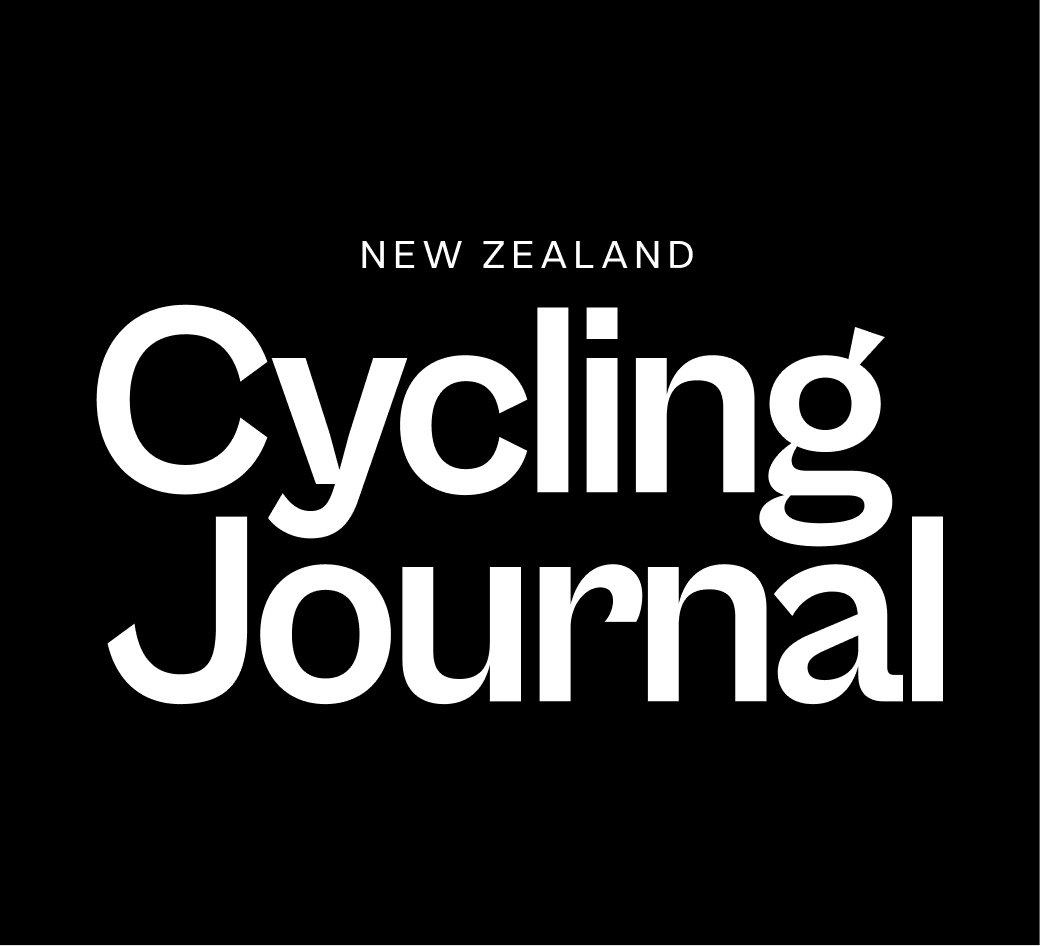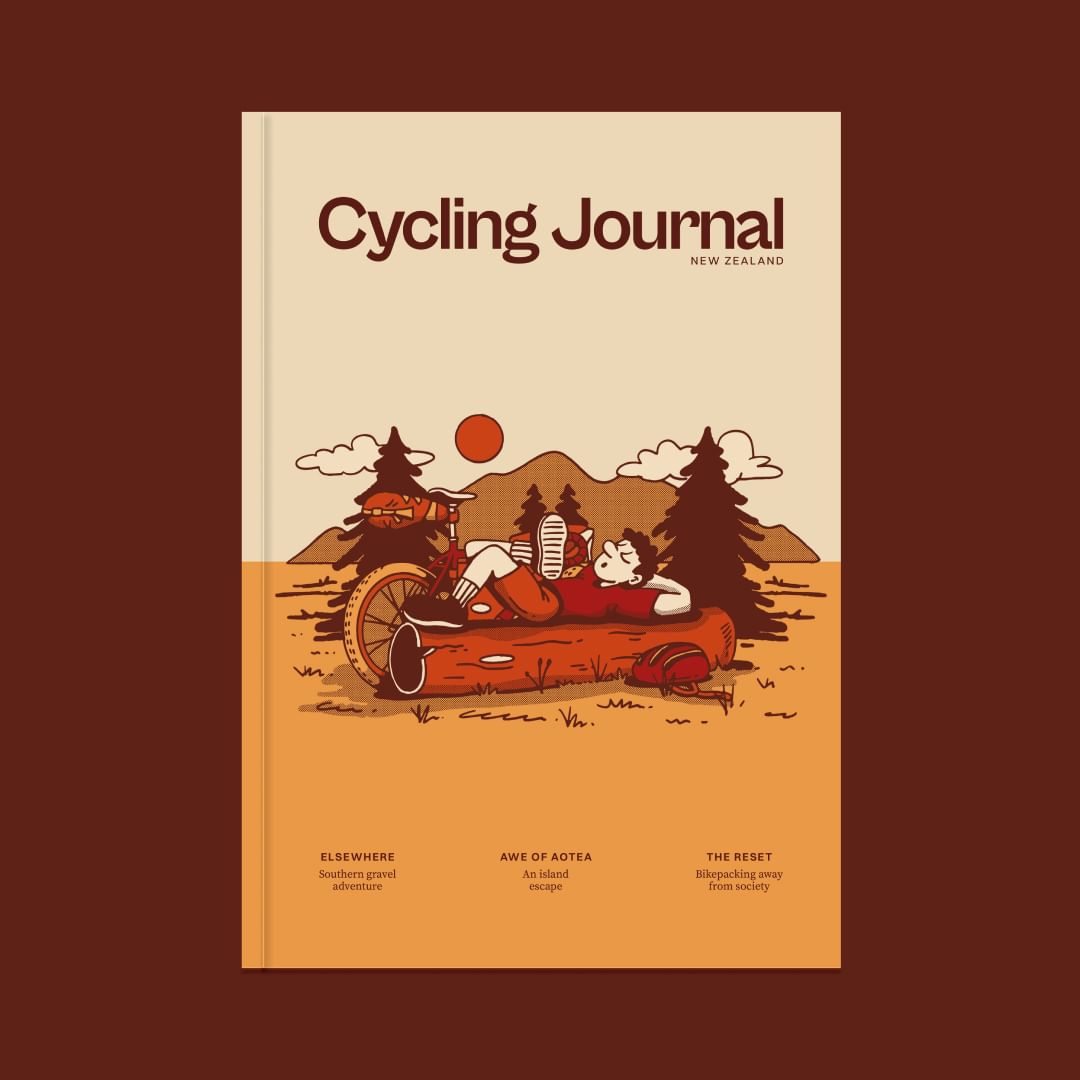Words & Images Douglas Wright
It felt as though someone had pulled out the bath plug. We were stuck in the flow, rapidly being drawn down the drainpipe; daylight vanished behind us, replaced by an echoing roar. Our GPS signal suddenly disappeared, swallowed by the concrete pipe. There was no turning back now. The road dropped away, and we started speeding towards the bottom of the ocean.
My partner, Laura, and I had arrived in the Faroe Islands just the day before, seizing a rare opportunity to explore this remote archipelago situated between Iceland, Norway, and Scotland.
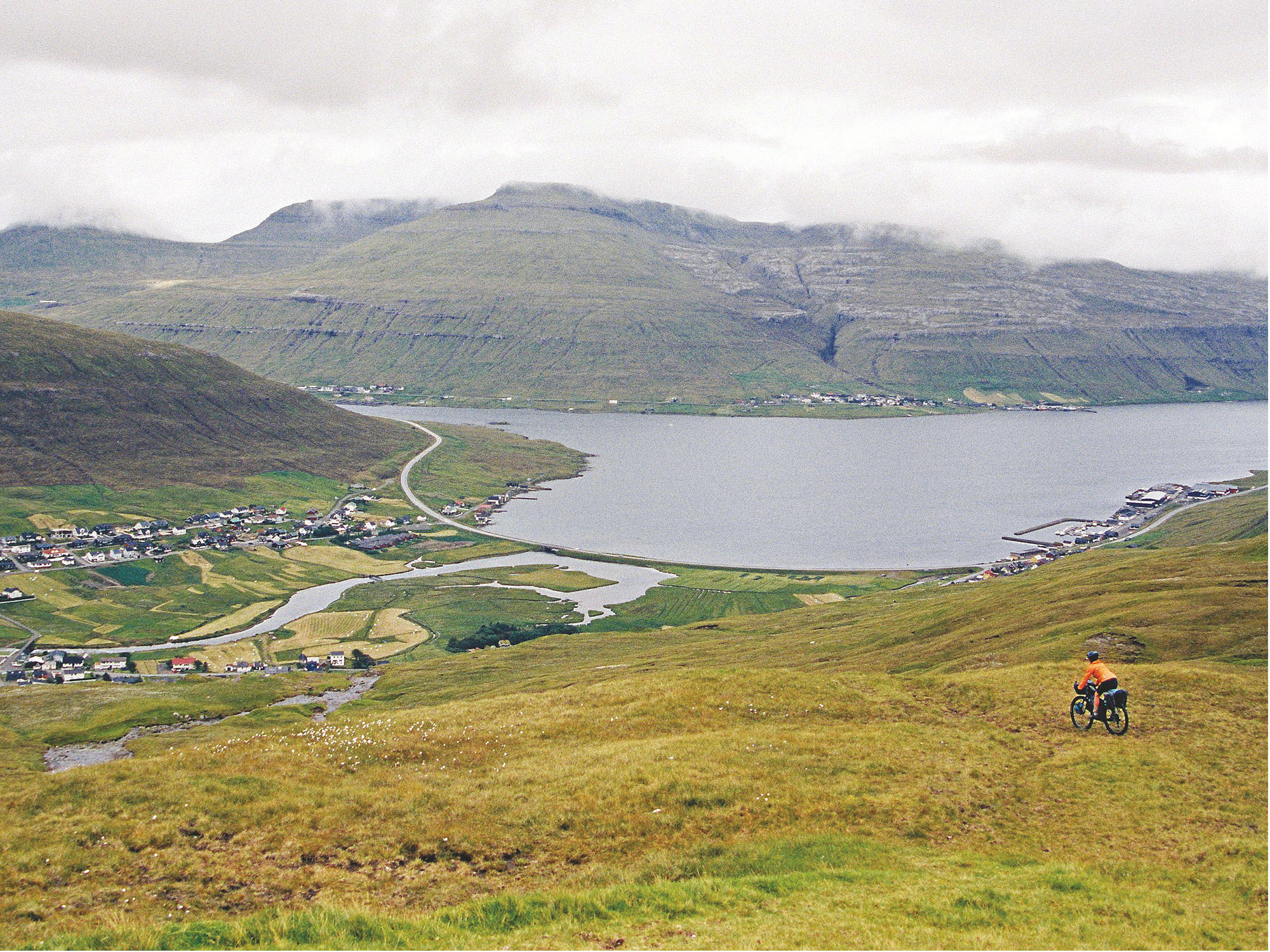
While this is almost as far away from New Zealand as we could get, we had been drawn in by internet images of remote roads surrounded by breathtaking scenery. “Is this the ultimate cycling location?” I wondered. With this excitement, I had devised a route connecting roads and trails, to explore as many of the 18 islands as possible. It soon became clear, however, that our entire trip hinged on the ability to cross the fjords via the undersea tunnel network. An email to the tourism office and a subsequent reply granted us a hesitant “yes”, accompanied by a subtle “at your own risk” caveat. The weight of that ominous ‘risk’ eluded us as we excitedly packed up our bikes and gear.
I have cycled over remote mountain passes, weaved my way through forests and enjoyed coastal meanders, but as our speed slowed at the bottom of the tunnel, I realised this was my first time cycling under the ocean. We were 100m below the frigid Atlantic waters and any sense of a horizon line was long gone. In this hellhole, cars whizzed past only centimetres beside us. I could feel the suffocating fumes as I struggled to see the way out, four kilometres ahead. The initial thrill of serene island cycling had transformed into a desperate yearning to escape the oppressive underwater tunnel.
Little did we know, this tunnel was just the beginning. Travelling to this remote corner of the earth was about to open our eyes to what is needed for a society to live in such a place. A society connected to the sea, the weather, and their unique landscape.
After emerging from the Vágar Tunnel, we couldn’t help but savour the fresh air at the first possible pull-off. “I never want to do that again!” Laura exclaimed. The reality was, there were no other viable options. A glance at the map will show you the Faroe Islands look like an incomplete puzzle, with 18 pieces scattered across the sea. A network of tunnels, bridges, and ferries interconnects the pieces — all of which we’d need to use if we were to explore the nation.
We were now on the largest island, Streymoy. We turned off the main road and headed along the coast, relieved to be pedalling above sea level. Clouds hung in the air and in the distance, we could see rain drifting by.
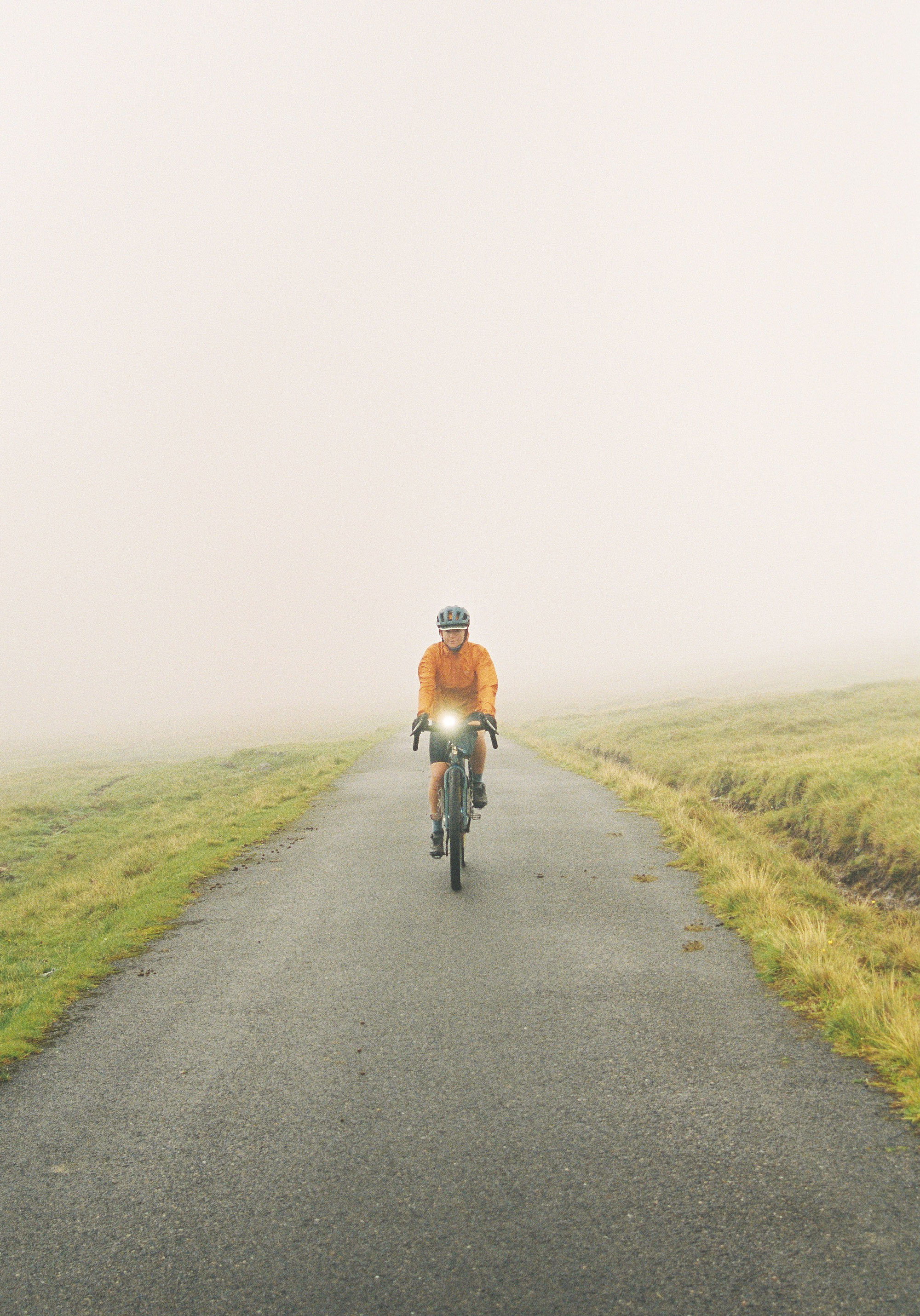
The day's challenging start became a distant memory, with the unique landscapes quickly winning us over. The Faroese landscape was emerging as dramatic, with mesmerising ocean cliffs, an extended rugged coastline, and mountainous hills.
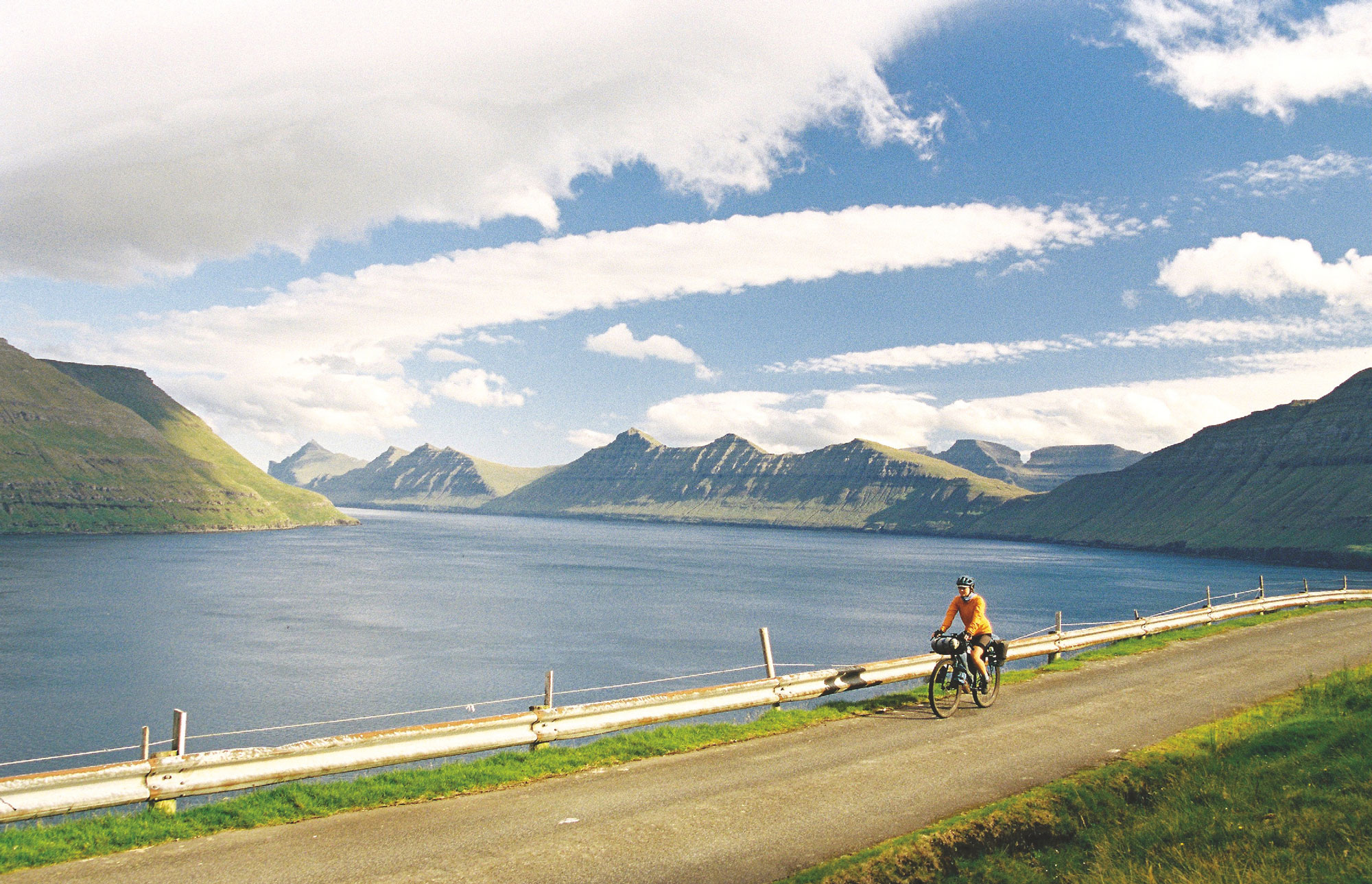
Upon reaching Vestmanna, we ventured up a narrowing and progressively rugged mountain road. The road eventually ended, and a narrow, steep track continued up to the remote mountain tops. It was not meant for cyclists, let alone ones with 30-kilogram bikes, but we embraced the hike-a-bike challenge. Progress was slow, and Laura and I had to work together to manoeuvre the bikes up the steepest parts. As we reached the high point of 425m, we found ourselves surrounded by panoramic vistas.
The harsh climate, characterised by summer temperatures averaging a mere 11 degrees and strong winds constantly battering the land, makes for a predominantly grass-covered terrain. With this absence of trees, expansive and unobstructed views across the islands were unfolding.
Descending towards the town of Streymnes with the gradient on our side, we rode some of the steep and technical track. With eyes wide and excitement levels high, we reached the bottom of the trail, emerging onto a road where a group of young teenagers were practising wheelies on their bikes. They looked confused about where we had come from but ultimately decided that attempting to do an even bigger wheelie would be more fun than talking to strangers.
Crossing a bridge to our third island, we camped for the night surrounded by the fading light on the sea cliffs. The day’s challenging start became a distant memory, with the unique landscapes quickly winning us over. The Faroese landscape was emerging as dramatic, with mesmerising ocean cliffs, an extended rugged coastline, and mountainous hills.
The following day, we wound our way up and over the ridge of Eysturoy on a seasonal road before reaching the quaint village of Gjógv. Puffins graced the sea cliffs, their tiny wings flapped in manic blurs, flying from the rocky cliffs before their bodies disappeared into the landscape beyond.
We continued by following a flowing ribbon of asphalt next to the fjord which would lead us around to the next headland before transitioning into another trail. This trail once again turned into a hike-a-bike section interspersed with some technical riding above a steep drop-off to the Atlantic Ocean below. As we reconnected with the paved road in the late evening, the cloudy weather took a turn for the worse. The threatening rain materialised as we approached two intimidating tunnels which would lead us through two hills and under a fjord. Another harrowing 8.4km of tunnels followed, with a constant flow of vehicles whizzing within centimetres of us.
After what felt like a lifetime, we emerged in the second-largest city of Klaksvík and our fourth island of the trip. To our amazement, we found ourselves bathing in late afternoon sunshine and blue skies — a stark contrast to the previous island. We caught the final ferry of the day and enjoyed the over-water trip to Kalsoy. Engaging in conversation with the deckhand, he shared tales of the ever- changing weather, recounting instances of ferry cancellations because of formidable swells in the fjord. “That’s one great thing about the tunnels, even on rough days I can be in Tórshavn in about 45 minutes and see my daughter. When I was growing up, it was a big trip to get down there”.
With fewer than 80 residents scattered across four small settlements, the landscape of Kalsoy unfolded like a postcard image, with colourful houses juxtaposed against grassy hills and the fjord below. Arriving at our camp around 9:30pm, the pink hues of the sunset illuminated the sea cliffs in the distance. Amongst this breathtaking panorama, the islanders were hay harvesting, working into the night to secure supplies for the impending winter.
The following morning, we returned to the ferry, and upon reaching Klaksvík, we embarked on a loop to our northernmost island of Viðoy. As we headed across the causeway that connected the two islands, we approached the small town of Hvannasund.
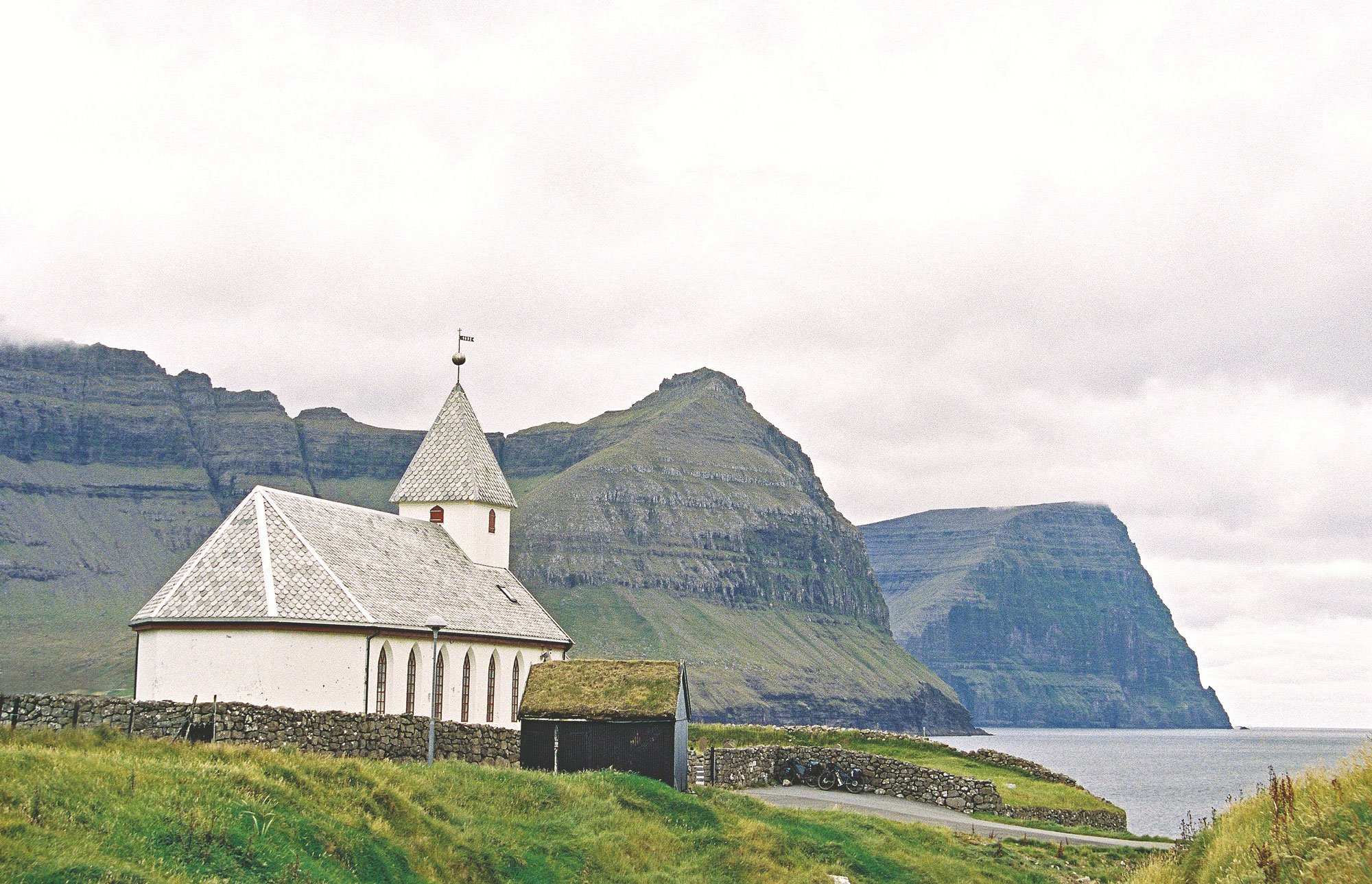
Upon reaching the coastal campground in Tórshavn, rain began, and we witnessed tents contorting and bending under the force of strong winds. With all alternative accommodation full, we could only hope that our lightweight bikepacking tent would survive the night.
On our right-hand side, in what was normally a dock, people in high vis walked between 40 large dark blobs. As we got closer, it became apparent these were pilot whales recently captured from the town’s hunt – or ‘grindadráp’ as the locals call it. We were initially taken aback by this scene, as the whales were being butchered right in front of us. We watched as the townspeople, young and old, gathered. They appeared happy, almost celebratory, about what the hunt had brought them. Lessons proceeded about how to butcher these whales while the kids watched open-mouthed, some taking the chance to poke the large blobs of flesh that lay next to them. Slowly, a truck was loaded up with the meat before it drove around distributing it among the local houses. It was a graphic scene, but the cultural element was clear to see. The Faroese have hunted whales for centuries, and their meat and blubber are a traditional part of the local diet.
We pedalled away up the quiet coastal road reflecting on what we had seen while down below in the fjord. A cluster of circular nets signalled a salmon farm. It must have been feeding time as the otherwise still water was awash with fish jumping to get the mechanically dispensed food pellets. It was clear to see that these waters are the breadbasket for the Faroese – a source of life, nutrients, and culture.
After seeing the beautiful sea cliffs and wind-swept hills in Viðareiði we embarked on our pedal towards the capital, Tórshavn, where we planned to catch a ferry to the two southern islands of Suðuroy and Sandoy. With more tunnels to come along the way, I picked up a broken reflector post from the roadside and strapped it to my rear rack. The horizontal reflective end sticking out about half a meter. We combined our lights and mounted two flashing red ones plus my front strobe to the rear of my bike. I felt like a Christmas Tree, but the barrage of flashing lights and colours appeared effective as this time most cars slowed or gave us a little more room through the tunnels. Nevertheless, no matter how many tunnels we went through, they remained a source of dread. With another 70km to go until Tórshavn, we called it a day and camped above the fjord, where a lone ship sailed below.
The weather forecast predicted our luck was about to run out, so we left early the following morning to make the most of what time we had. By lunchtime, we were battling relentless headwinds, transforming our journey into an all-day battle. Upon reaching the coastal campground in Tórshavn, rain began, and we witnessed tents contorting and bending under the force of strong winds. With all alternative accommodation full, we could only hope that our lightweight bikepacking tent would survive the night. The following morning, and with the tent still standing, we decided to push on as planned and boarded the ferry expecting a bumpy ride. All we could do was hope the storm might pass through quicker than expected. On arrival in Suðuroy, we found that an old scout den was available to use in the nearby town of Tvøroyri. Although lacking in luxuries, the cost was budget-friendly, and with rain intensifying, we seized the opportunity.
The next morning greeted us with the rhythmic patter of rain on the windows. Leaving the warmth of the old wooden building would be challenging, and the prospect of a rest day was enticing. By midday, we still hadn’t moved, and another couple turned up looking soaked. They told us about their treacherous night spent battling the wind and the rain in their tent and this story soon convinced us to stay another night.
While the weather was only marginally better the next day, we agreed to confront the gusty winds and drizzle to complete a brief loop. As we headed north, the views – which we could make out between the swirling mist and fog – were stunning. As we reached the northernmost point, the weather continued to worsen, and visibility dwindled to a mere five metres. With the risk of inadvertently riding off a sea cliff, we were forced to turn back. Struggling just to stay on the road, and sometimes being blown off completely, we painstakingly retraced our path to the safety of the scout den for our third night.
It left us seeing them not only as a picturesque destination, but as a place illustrating resilience, flexibility, and a harmonious relationship with nature.
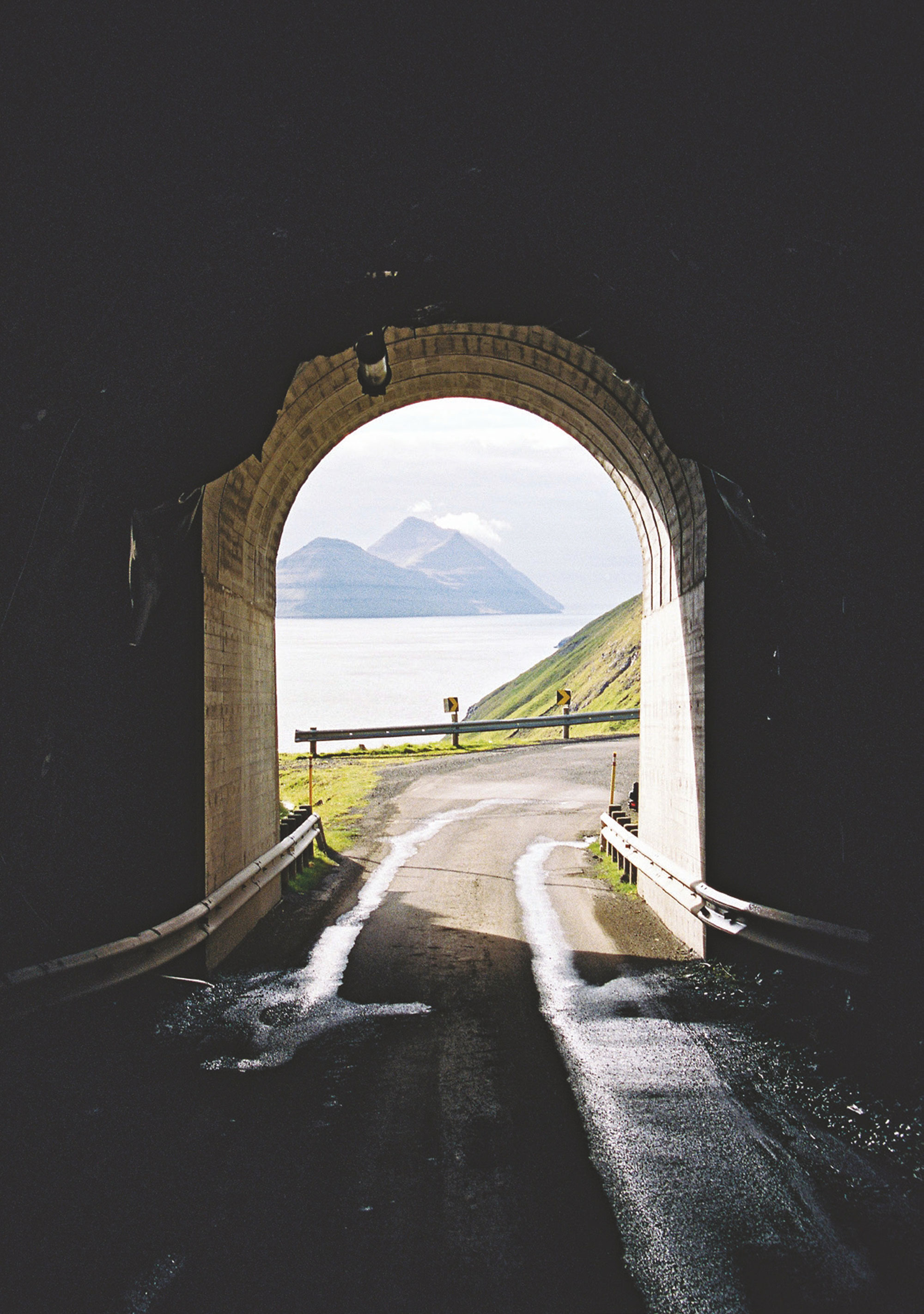
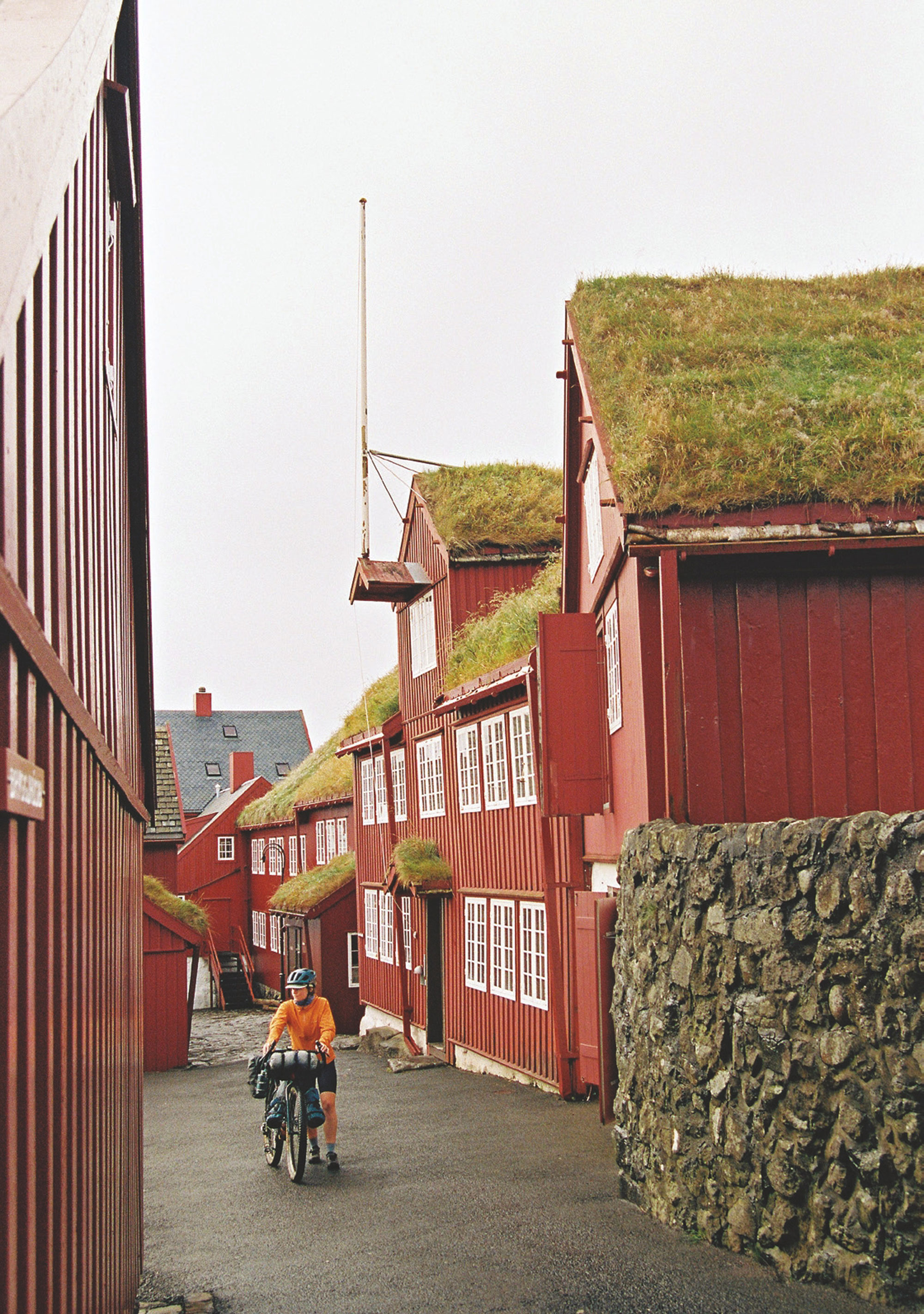
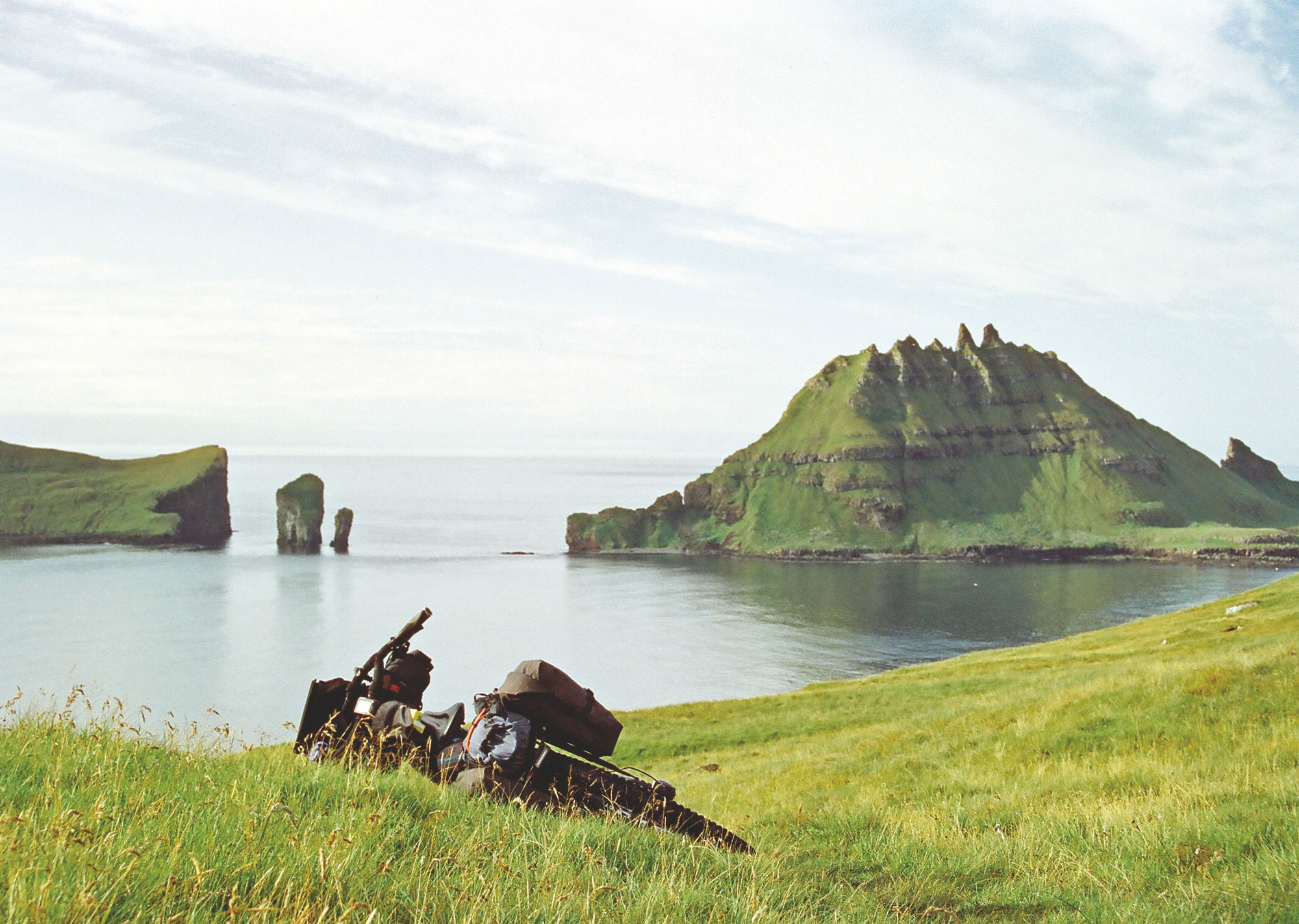
Given we had lost days of riding to the weather, we had no chance of completing our proposed route. This would mean missing the southern part of Suðuroy, along with the small island of Sandoy, but having to adapt to the weather seems to be a way of life here. As we headed back to Tórshavn through the sea fog, we left the southern islands unexplored, but with a small glimpse of their potential.
With a day and a half left before our flight departed, we started the journey towards the airport after exploring Tórshavn. The capital city was founded in the 10th century by Viking settlers who established it as their capital through the creation of a yearly public assembly that met every summer until 1816. A modern legislative system then replaced this, but many of the 16th and 17th Century buildings used for meetings, along with the cobbled streets, remain. As we left this area, we cycled out past newer developments with their modern architecture and vibrant retail and hospitality venues.
Once out of the city, we headed along the island’s ridge. Between the villages, the landscapes appeared untouched, adding to the sense of remoteness even though we were never too far from civilisation. Patches of cloud drifted across the road while the intermittent views were once again stunning.
As we approached the Vágar Tunnel, the same tunnel that marked the beginning of our journey nine days ago, our hearts quickened. We were once again drawn into the concrete pipe and sped towards the bottom of the ocean. The deafening roar, the suffocating fumes and the cars whizzing past – all remained unchanged. Our ride, from these uncomfortable moments under the sea to the expansive mountaintop views, gave us a unique insight into life here.
While it was evident that the undersea tunnels weren’t designed for bikepacking tourists, their broader impact was unmistakable. They have united this nation, both physically and culturally, by providing dependable and direct access to settlements scattered across the islands. Despite these modern links, the traditional bond with the sea remains strong, with it serving as a vital source of income and sustenance. Equally significant was the bond with the land and its unique landscapes. Whether coexisting alongside puffins or understanding when to harvest the late summer hay, the Faroese people appeared in tune with the rhythms of their secluded archipelago.
Although we hadn’t completed our planned route, the need for adaptation and acceptance of the weather felt fitting. Our journey, from start to finish, was an experience with the forces that shape life in these far-flung islands. It left us seeing them not only as a picturesque destination, but as a place illustrating resilience, flexibility, and a harmonious relationship with nature.


